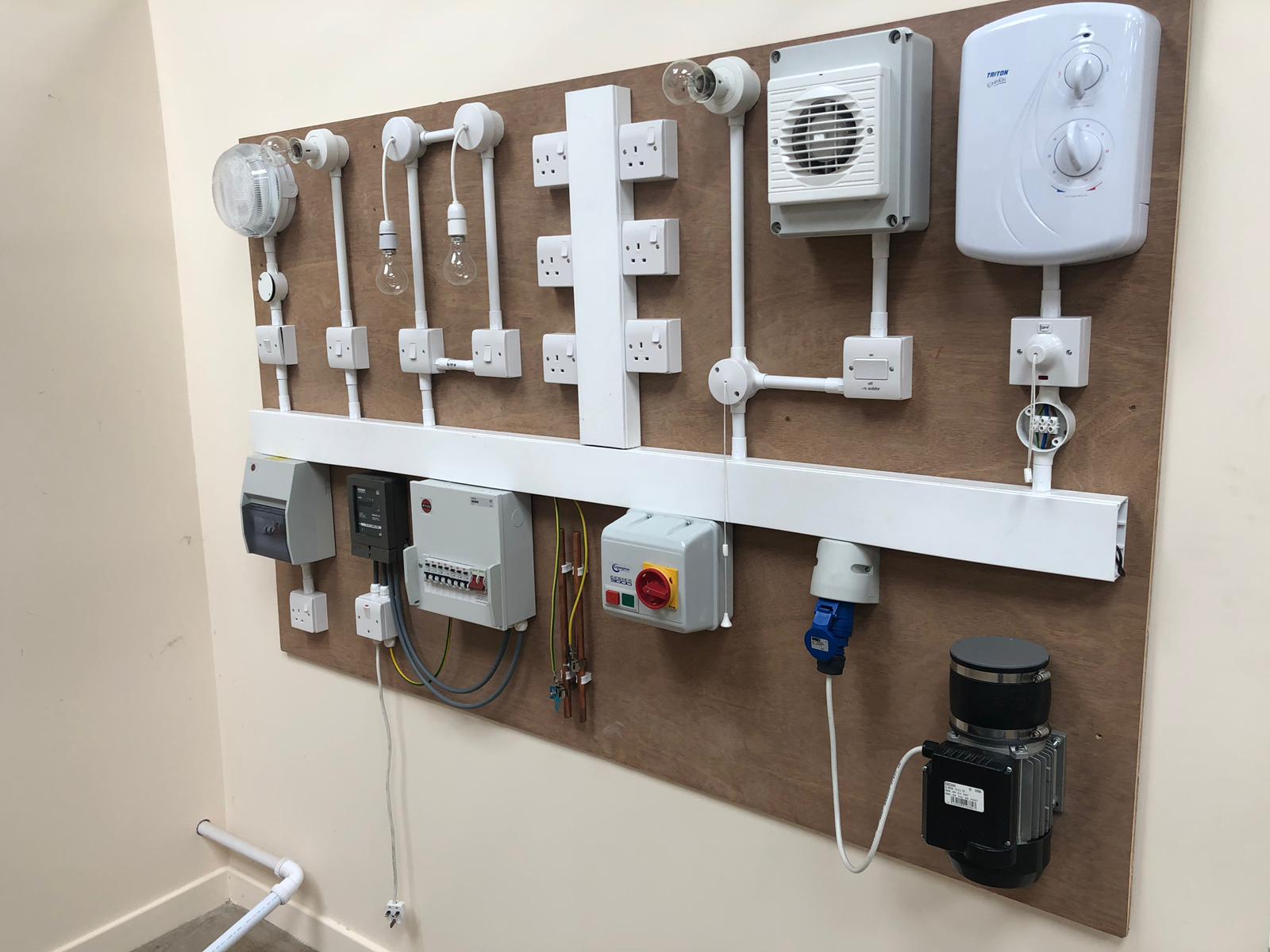Trustworthy and Specialist BRE Electrical Services for Every Project
Wiki Article
The Ultimate Overview to Electrical Installation: Tips and Strategies for a Safe and Efficient Home Circuitry System
In the realm of home upkeep, couple of aspects are as essential yet often neglected as the electrical wiring system. By checking out the subtleties of electric security measures and energy-saving methods, this thorough guide will certainly shed light on the intricacies of home electrical wiring, empowering people to take cost of their house's electrical framework.Understanding Electrical Precaution
To make sure the safety and security of both people and property, understanding and executing proper electrical safety measures is critical in any type of home circuitry job. Power is an effective pressure that can be dangerous otherwise managed with caution. Among the essential precaution is guaranteeing that all electric work is carried out by certified professionals that adhere to neighborhood building ordinance and policies. It is critical to carry out a comprehensive assessment of the electric system prior to starting any circuitry project to identify prospective risks or concerns that need to be resolved.Moreover, making use of the appropriate tools and devices is essential for maintaining security throughout electric installments. Insulated gloves, voltage testers, and protective eyeglasses are several of the fundamental safety equipment that must be worn to avoid electrical shocks or accidents. It is additionally vital to de-energize circuits prior to functioning on them and to identify all circuits and breakers clearly to prevent confusion.

Important Tools for Home Wiring
Ensuring the appropriate execution of electrical security measures in home electrical wiring projects entails utilizing a certain set of essential tools designed to facilitate the installment process properly and securely. Some of the trick devices needed for home electrical wiring projects include a voltage tester for inspecting live cords, cable strippers for getting rid of insulation from cords, a wire cutter for specifically reducing cables to length, a screwdriver set for safeguarding electrical parts, electrical tape for insulation and safeguarding connections, a wire ripper for stripping cable television sheathing, and a multimeter for gauging voltage, current, and resistance.Step-by-Step Electric Setup Overview
Starting an electric installment task needs thorough planning and adherence to security standards. Prior to starting any type of work, guarantee you have a thorough plan describing the layout of you could try these out the electric system, including the placement of electrical outlets, switches, and components. Consider the power demands of each device to determine the proper cable scale and circuit breaker dimensions.The first action in the installment process is to shut down the power supply to the area where you will be functioning. Utilize a voltage tester to verify that the circuits are de-energized prior to touching any kind of cords. Next off, thoroughly remove existing fixtures or outlets and disconnect the wires.
When click for more info installing brand-new wiring, run cables via wall surfaces and ceilings, protecting them in position with suitable fittings. Follow regional building codes and producer instructions for proper cord installation and links. BRE Electrical Melbourne. See to it to identify cords for simple identification and future maintenance

Troubleshooting Common Electrical Wiring Issues
Having actually completed the installment procedure as outlined in the previous subtopic, fixing usual wiring concerns is a vital ability for guaranteeing the safety and performance of your electrical system. One usual problem is a tripped breaker, typically brought on by overloaded circuits or a brief circuit. To fix this, find the breaker panel, identify navigate to this website the tripped breaker by seeking the one not completely in the "on" position, and reset it by turning it totally to "off" and after that back to "on." Another common trouble is a defective electrical outlet, defined by no power or recurring power supply. Guarantee the electrical outlet is not controlled by a switch, after that make use of a voltage tester to examine for power. If there is no power, shut off the circuit, examine the wiring connections for any type of loosened or broken cables, and change the electrical outlet if necessary. Constantly flickering lights can suggest loosened electrical wiring connections or an overloaded circuit. To resolve this, check and tighten up all cord links in the affected components and buttons and rearrange the tons on the circuit to stabilize the electric demand. On a regular basis checking and quickly resolving these usual circuitry problems will certainly preserve the safety and security and effectiveness of your home electric system.Tips for Energy-Efficient Electrical Systems
For ideal power effectiveness in electric systems, carrying out clever techniques and making use of energy-saving technologies is vital. One essential idea for achieving an energy-efficient electric system is to update to LED lights. Correct insulation and sealing of windows, doors, and electric outlets can likewise protect against energy loss, eventually lowering the work on electrical systems.Conclusion
Finally, executing correct safety steps, using necessary devices, following a detailed setup overview, troubleshooting usual issues, and including energy-efficient tips are crucial for a risk-free and reliable home wiring system. By adhering to these techniques, home owners can guarantee the durability and capability of their electrical installments. It is necessary to prioritize security and effectiveness when it pertains to electric operate in order to avoid prospective dangers and to maintain a reliable electric system in the home.Report this wiki page